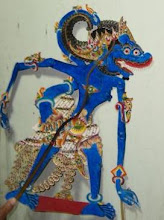But I also want a “Tree of Worlds”
to be an actual thing in the game. From now on, when I speak about
the Tree I mean a graphic like this:
This is going to be the focal point for
long-term play, the central artifact of a “campaign”. Beginning
as a mere blank page, the Tree is at once a journal of the stories
and events we as a group enacted in play, and a summary of the state
of the whole universe (or, rather, the sum of all worlds already
known to us, the players). The arrows, especially, are meant to be
drawn in pencil, and to be constantly updated – between sessions –
as a consequence of the latest fictional events.
First, the player-characters are
walking the Spheres, thus discovering and exploring new worlds, which
we add to the Tree as we get to know them. Second, such characters
are exceptional – both in being “heroic” and merely because of
being outsiders – which means they affect the worlds they travel
through and, most especially, the relationships between worlds
(in fact, there would be no contact between Spheres if not for
Spherewalkers, right?).
I’m interested in “mechanizing”
or quantifying this upkeep somewhat, so that the actions of the
player-characters during each session of play translate into a finite
number of changes to the Tree, depending on their magnitude. But more
on this later, in some future installment.
Hub Worlds
The first thing we need to mark on the
Tree, at the beginning of a campaign, is a central bubble
representing our Hub World – which is: a place suitable as a base
of operations for spherewalkers, by virtue of containing an unusually
high number of Gates.
The city of Everway, introduced in the
original game-set, is of course a perfectly suitable Hub World: it’s
both the prototype and the source for the concept. For my tastes,
though, the city of Everway as detailed there is quite overwritten:
the amount of information given, 1990s style, is apparently meant to
support complex adventures set within Everway itself, or to be used
as building blocks for writing long and detailed character
backgrounds — neither of which is going to be a huge point of
interest for me. My guess is that using by-the-book Everway as your
Hub World is only going to be the best choice if you’re a group of
old-hands at Everway, thus already familiar with that city, or
if the majority of you likes to learn about a setting by reading. In
my case, though, it would probably degenerate into me lecturing my
fellow players about the setting, which I think would be a *bad*
idea.
In the (more likely) case that your
friends are not already well-read about the city of Everway, I
suggest creating a Hub World of your own as a group brainstorming
session. It doesn’t need be very detailed! You can probably
complete the task within a hour, and then proceed to make characters.
You can start from a bunch of Vision
Cards, or any other source of inspiration, such as referencing some
historical real-world civilization. You just need to envision
something. Then ask this core question and try to answer it as
a group: how has the presence of so many Gates and so many
Spherewalkers changed this society? As with all such matters, by
giving the first and most obvious answers to cross your mind, you’re
bound to surprise each other. If you want, you can get more detailed
by answering some additional questions, such as:
- How frequent are Spherewalkers within the local populace? (it’s 1% in the City of Everway)
- Are native Spherewalkers identified as a separate social group, maybe as a caste or as members of a special trade?
- How does one learn they’re a Spherewalker? Is this known from birth, or is there a training one undergoes, or a test, etc.
- How do natives feel toward non-native Spherewalkers?
- How does sphere-walking feature into the local economy?
- Are there any “neighboring” worlds, sphere-walking to and from which is especially common (these can be marked on the Tree already)? Maybe regular trade or diplomatic relationships through these particular Gates? How frequent are such travels?
- What does the typical Gate look like here (if it makes sense to speak of a “typical” Gate)?
- Is the access to Gates somehow regulated (are Gates guarded, etc.)?
- How scattered or concentrated are these Gates?
- How easy or hard to find can Gates be in this Realm?
- Do local Spherewalkers believe they know of all the existing Gates in this realm, or do they look forward to discovering more?
- How are Gates and Spherewalkers politically relevant?
- How much does the general populace actually know about Gates and sphere-walking?
Whatever you do, though, I suggest you
don’t decide on the exact number of Gates in your Hub World
and, especially, that you don’t compile a comprehensive list
of destinations such as the one found in the Everway Player’s
Guide. I think it’s excessively limiting and ultimately
counter-productive to do so, in that it greatly reduces your
opportunities for creating adventures rather than expand them. In
fact, if you do use Everway as your Hub World, I advise you to
disregard that list of Realms and only use it as suggestions of
possible worlds (excellent suggestions, I add), but never as the
ultimate index of available destinations from there — lest you get
mired down in the logistics of getting from point A to point B,
making your adventures needlessly complicated.

.png)








